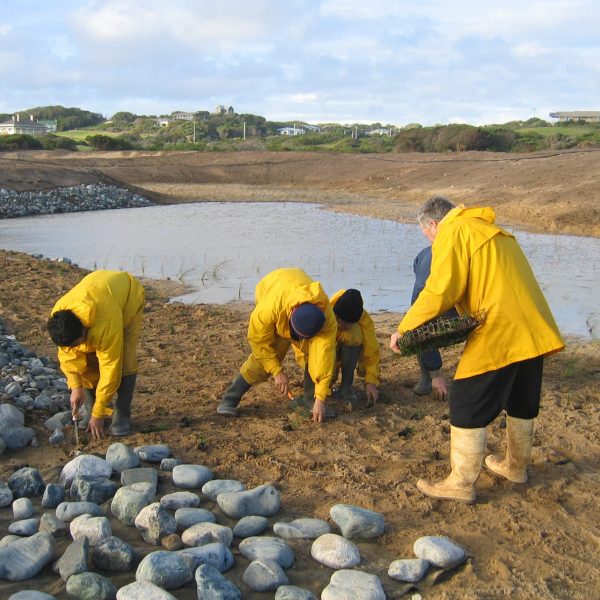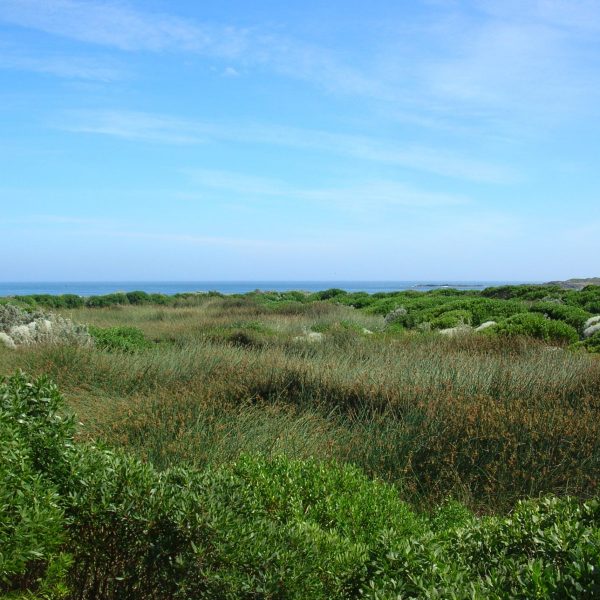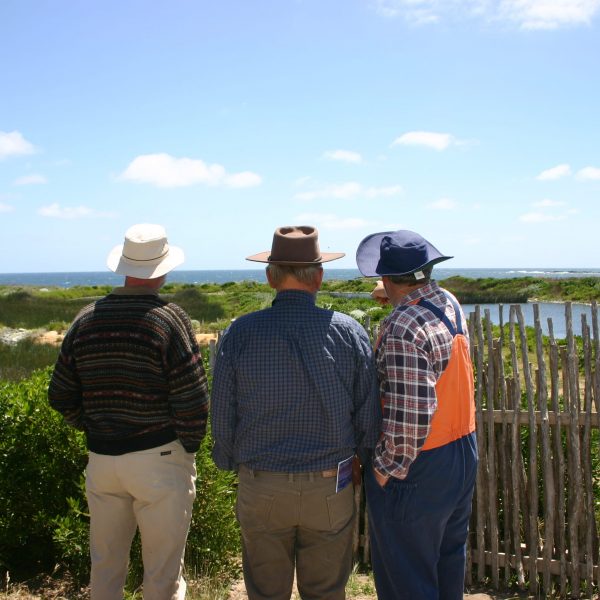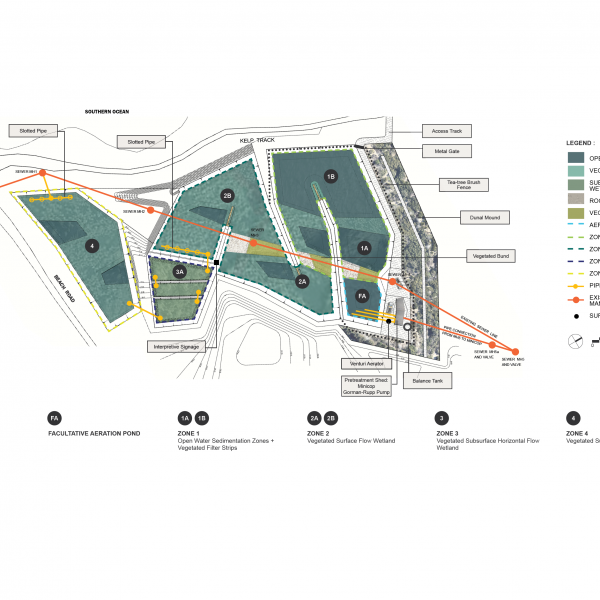This Currie King Island project is a sewage treatment wetland
Location: King Island, Tasmania
Client: King Island Council
Time frame: 2002 – 2005
Services provided by Syrinx
Constructed Wetlands and Biofilters; Consultation and Engagement; Ecological Engineering; Graphics & Signage; Landscape Architecture; Specialist Construction; Sustainable/Green Infrastructure
Project Phases Delivered
Project Phases Details
This Currie King Island project is a sewage treatment wetland
The project demonstrates a sustainable solution for tertiary level sewage treatment for 1200 people. The wetland is passively fed and treats bio-solids. It consists of a conventional front-end screening device, followed by a facultative pond, a series of vegetated and non-vegetated areas and a subsurface flow wetland.
Prior to constructing the wetland, about 275,000 litres of raw sewage discharged daily to the ocean.
The treatment system helps to conserve King Island’s environmental value by facilitating ecosystem protection, passive recreation, community involvement and education, and aesthetic enhancement, while eliminating the public health risk from the previously untreated sewage outfall.
Awards and achievements
- Tasmanian Awards for Environmental Excellence, Local Government Category, 2006, Winner
- Local Government Association of Tasmania Awards for Excellence, Sustainable Community Asset Category, 2006, Winner
- Local Government Association of Tasmania Awards for Excellence, Overall Gold Award, 2006, Winner
- Banksia Award, Local Government Category, 2006, Winner
- Environment – Integrating Biodiversity into Planning and Management, Rural Category of the National Awards for Local Government, 2006, Winner
- National Award for Local Government, 2006, National Finalist
Key outcomes
- Implementation of the first wetland designed to achieve secondary and tertiary level sewage treatment in Australia.
- Provision of a low energy system that integrates primary treatment with gravity fed constructed wetlands
- Selection of native vegetation suitable for passive systems with high organic loading.
- Successful delivery of a system with a capital cost of less than 30% of the equivalent mechanical systems, and with very low operating costs due to native vegetated landscape and predominantly passive technologies.
- Provision of employment opportunities for local residents.
- Reintroduction of endemic species and the promotion of environmental and historical values of the local area.







